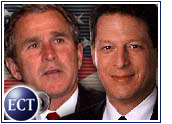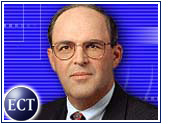Data from a new geographic Internet usage report released by Nielsen//NetRatings (Nasdaq: NTRT) indicates that the pattern of Net usage in the top 20 U.S. markets does not correspond with population size.
The report focuses on total size of an Internet market, the percentage of residents using the Internet, how long they stay on, how their Web use affects their TV viewing time and other data. The cross-media data, Nielsen//NetRatings says, “enables dot-com, new media and other technology companies to design and deploy more targeted and efficient marketing campaigns.”
The Big Apple
New York, the most populous city in the U.S., has the largest number of Internet users with 4.3 million. Los Angeles, the second most populous city, follows with 3.6 million users. However, San Francisco has the greatest Internet penetration rate in the U.S., according to the report, with 61 percent of residents online.
San Francisco claims the third spot in overall number of Internet users with 2.2 million. Although Chicago is the third most populous U.S. city, its Web users number only 2.1 million.
San Diego, Denver and San Francisco topped much larger markets in the amount of time users spend online. In February, the average user in San Diego spent 11 hours and 16 minutes, followed by Denver, with 10 hours, 47 minutes online. San Francisco came in third, with users spending nearly 10 hours and 18 minutes online.
The data shows a strong correlation between Internet penetration and time online, Nielsen//NetRatings said, noting that all three of those cities rank in the top 10 in penetration, despite Denver and San Diego having relatively smaller markets to draw from. “Their market size and usage rankings show these areas are Internet hotbeds and suggest they are at the forefront of new media,” the companies said.
Technology Centers Dominate
The new report shows that four of the top five markets for Internet penetration are on the West Coast. After San Francisco, San Diego, Washington, D.C., Seattle and Portland are the next most saturated markets. Those five and Boston are the only markets with greater than 50 percent penetration.
Nielsen//NetRatings says the higher penetration rates are likely due to those markets’ general focus on technology. “Markets that are well-known technology centers lead the pack in terms of Web penetration,” NetRatings Vice President of Analytical Services Allen Weiner said. “The various ‘Alleys’ and ‘Valleys’ across the U.S. appear to have the largest concentration of early Internet adopters.”
Converging Media
“Knowing where Web penetration is high sheds light on areas likely to lead the move to TV-Internet convergence, and could help technology and media companies, who are setting their sights on new multimedia content services, understand the markets that could provide them the largest initial opportunities,” Weiner said.
In addition to topping the Internet penetration list and ranking third in total number of Internet users, the San Francisco area, which includes Oakland and San Jose, has the fifth largest TV audience in the United States.
Washington D.C. shows similar multimedia promise, with the third-best penetration rate, the sixth largest number of Internet users and the eighth largest TV market. The largest TV markets — New York, Los Angeles and Chicago — ranked 14th, 10th and 12th, respectively, in Web penetration.
Local Trends
Nielsen//NetRatings also provides data about demographics in each market and identifies which Web sites are most popular in each area, to “enable advertisers and their agencies, news and information providers, and Internet marketing and content companies [to] obtain a clearer picture of the dynamics of local and regional Internet trends and behaviors,” the company said.
For example, though New York appears to lag in penetration and time spent online, that market has strong demographic advantages, the companies said.
In New York, 26 percent of the population earns more than $100,000 (US$) per year, 21 percent have reached education levels higher than a bachelor’s degree, and 12 percent of the population is comprised of teenagers. Nielsen//NetRatings notes that these are three of the most targeted demographic groups for Internet-related companies.
















































Social Media
See all Social Media